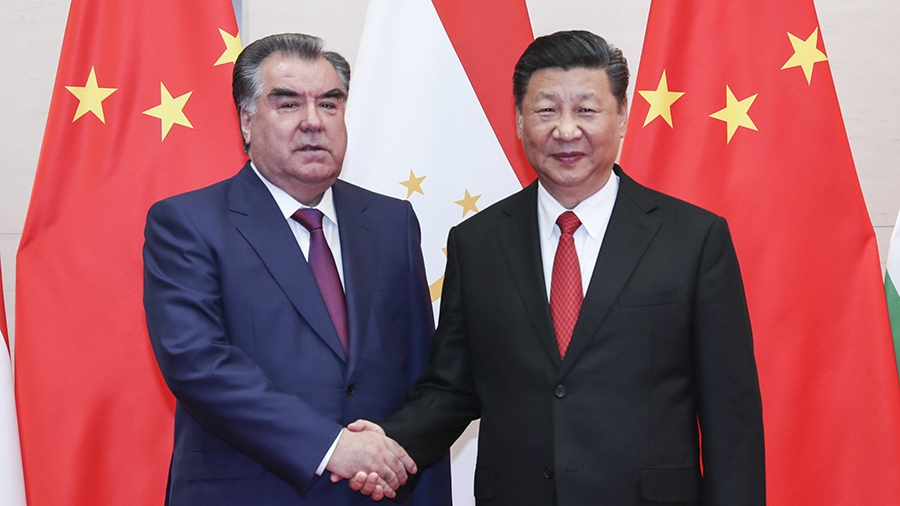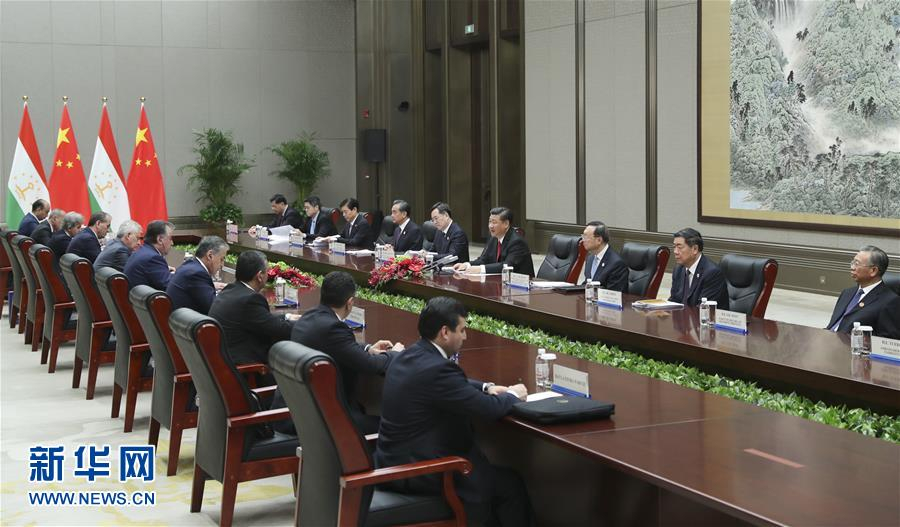
Politics
22:48, 09-Jun-2018
Belt and Road Initiative: Guide to China-Tajikistan cooperation
CGTN

The China-proposed Belt and Road Initiative has become a guiding principle for the cooperation between China and Tajikistan, as Chinese President Xi Jinping said on Saturday. He also looks to the future, hoping to promote financial, investing and Internet cooperation between the two countries.
Xi made the remarks when meeting with his Tajik counterpart Emomali Rahmon, both of whom are now in the coastal city of Qingdao attending the 18th Shanghai Cooperation Organization summit.
In respect to security, Xi calls for continuing efforts against international crimes between the two sides. China welcomes this year's Conference on Interaction and Confidence-Building Measures in Asia (CICA) to be held in Tajikistan, and is willing to provide assistance to better prepare for the conference.

Chinese President Xi Jinping meets with his Tajik counterpart Emomali Rahmon in Qingdao, east China's Shandong Province, June 9, 2018. /Xinhua Photo
Chinese President Xi Jinping meets with his Tajik counterpart Emomali Rahmon in Qingdao, east China's Shandong Province, June 9, 2018. /Xinhua Photo
Rahmon speaks highly of the friendship between the two sides, amid China's long-term support for Tajikistan's development.
The Tajik president hopes to see more cooperation with China in areas including infrastructure construction, agriculture and technology. He acknowledges the fact that the international situation is getting much more complicated year-on-year, and thus the "Shanghai Spirit" should be well carried out.
The "Shanghai Spirit" is the set of values evolved from the SCO which calls member states to pursue a "community of shared future."
The SCO was established in Shanghai in 2001 with China, Russia, Kazakhstan, Kyrgyzstan, Tajikistan and Uzbekistan as founding members.
The group later expanded as India and Pakistan were recognized as full members last year. It now accounts for more than 60 percent of the Eurasian landmass, nearly half of the world's population and over 20 percent of the global gross domestic product.

SITEMAP
Copyright © 2018 CGTN. Beijing ICP prepared NO.16065310-3
Copyright © 2018 CGTN. Beijing ICP prepared NO.16065310-3